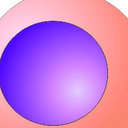The Craniovertebral Junction in Rheumatoid Arthritis: State of the Art.
الكلمات الدالة
نبذة مختصرة
Rheumatoid arthritis (RA) is a chronic inflammatory disorder, characterized by polyarticular inflammation causing progressive joint damage and disability. The mechanisms underlying its pathogenesis involve activation of innate and adaptive immunity, microvascular endothelial cell activation, and inflammatory infiltration of lymphocytes and monocytes into the synovium. Spinal involvement in RA is not typical; when it occurs, the main radiological features are (1) atlantoaxial subluxation (AAS), which is the most typical form of cervical spine involvement; (2) cranial settling-also known as basilar impression, atlantoaxial impaction or superior migration of the odontoid-which is the most severe form of associated spinal instability; and (3) subaxial subluxation. A combination of these alterations may occur. Synovitis is characterized by infiltration of innate and adaptive immune cells; joint destruction is a consequence of activation of synovial fibroblasts, which acquire aggressive, inflammatory, invasive features, associated with increased chondrocyte catabolism and synovial osteoclastogenesis.Neck pain is the most frequent symptom of spinal involvement in RA; it occurs in 40-80% of patients and is mostly localized at the craniocervical junction. Other symptoms-caused by compression of neural structures such as the greater occipital nerve (at C2), the nucleus of the spinal trigeminal tract and the greater auricular nerve-are occipital neuralgia, facial pain and ear pain, respectively. Irritation of the lesser occipital nerve (at C1) can cause pain in the suboccipital region. Sometimes patients may complain of a sensation of their head falling down with flexion, weakness, reduced endurance, loss of ability, gait alterations, paraesthesias or other symptoms due to cord and medullary compression, and upper or lower motor neuron signs, or both. Surgical management of RA remains a challenging field.



